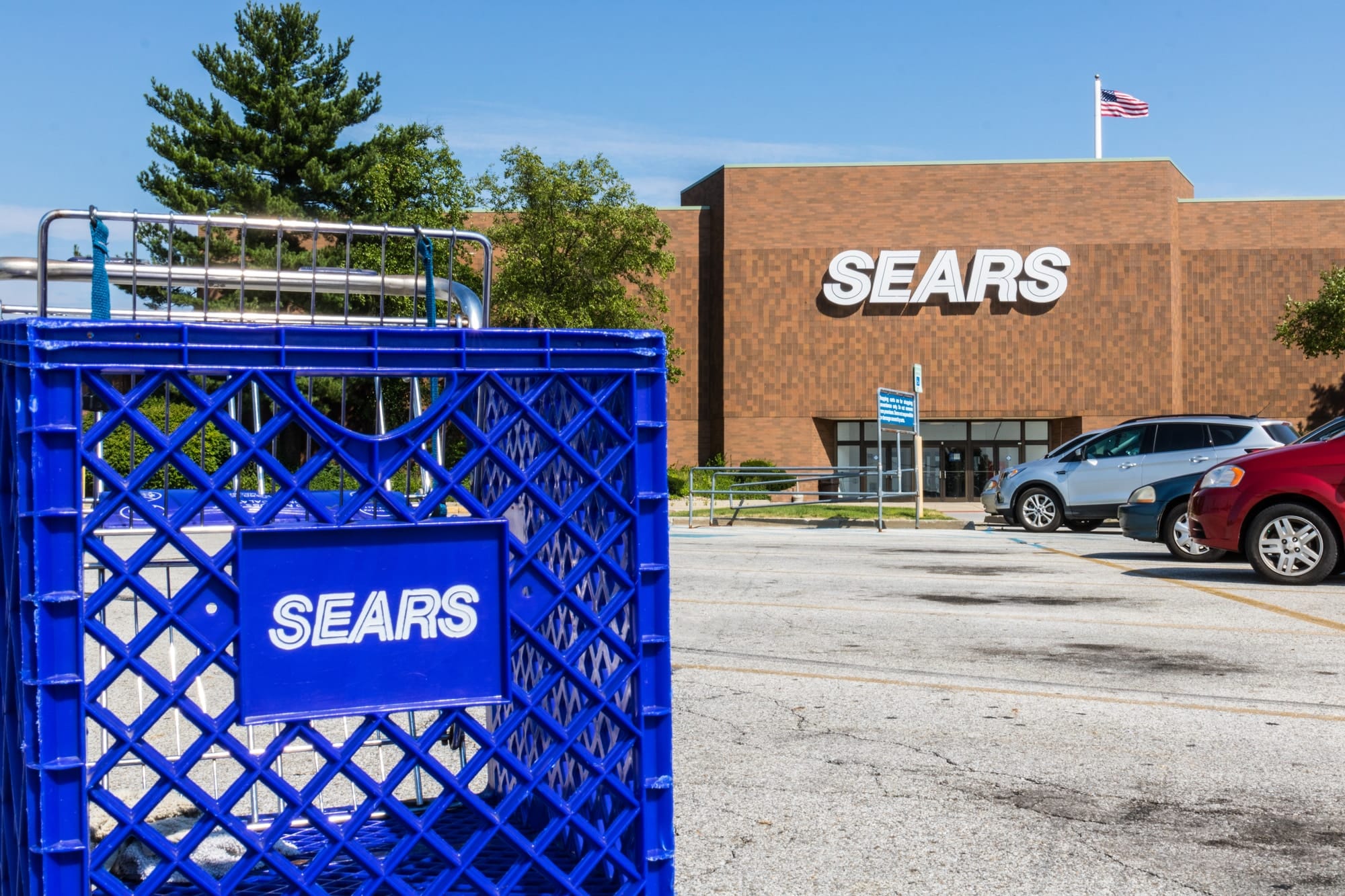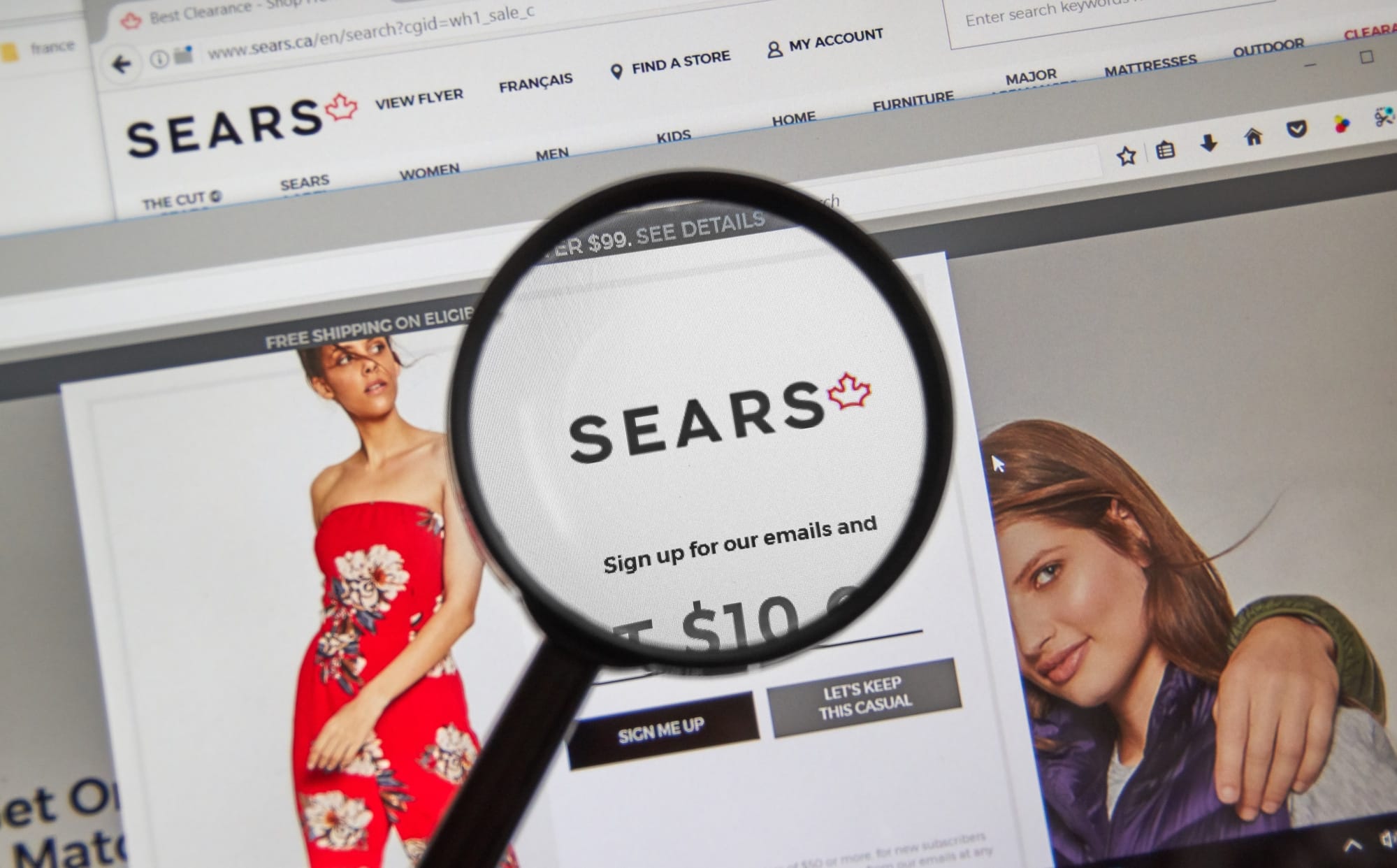In business, there is a scary term called "bankruptcy." Bankruptcy can also be defined as the death of a business since it is very rare that companies that file for bankruptcy return to the industry.
However, today's article is very special since we will discuss a brand that once ruled the US retail market. Unfortunately, later it declared bankruptcy, but that's not it because, after some time, the brand came out of bankruptcy and managed to regain its position in the market.
Isn't that surprising? Of course, it is. So today, we will be giving you an insight into Sears by conducting a Sears SWOT Analysis.

Sears is a well-known retailing brand, and it was once the world's largest retailer.
If you are a millennial, you must remember the hype of Sears until it lost its place in the market to Walmart in the 1990s. So you must be thinking, how did a brand, once the leading retailing brand in the US and largest in the world, come to the verge of declaring bankruptcy?
To answer that question, let's look at the history of Sears, so we know its journey. The history of Sears can be traced back to 1888 when its founder, Richard Sears, hired a watchmaker and came up with the first catalog that offered watches and jewelry. Then, in 1893, he registered his business under Sears Roebuck.
Soon Sears started offering factory-manufactured products in its catalogs, such as clothing and furniture. At that time, the people who lived in villages didn't have access to any such store offering factory-manufactured products like Sears.
This made the operations of Sears different and helped it in growing. Then, in 1913, Sears revolutionized the retail industry by posting its first labor-saving appliance on the catalog, a sewing machine.
In 1925, Sears finally managed to open its first retail store in Chicago right next to its warehouse. As Sears began to spread its operations, it kept products from different industries. For example, in 1927, the retail store started giving lifetime guarantees on Craftsman tools. This made Sears grow in the hardware industry.
In 1931, the store diversified its operations to increase its customer base by offering car insurance services. Finally, 1945 brought good news for Sears as its sales reached $1 billion. The brand was doing well, which became visible when Sears built the tallest skyscraper in the world in 1973.
In the 1980s, Sears diversified its operations by expanding into the IT sector by joining a joint venture to create one of the first internet ventures. Later, Sears began its credit card services, which people bought in massive amounts.
In 1993, the company discontinued its catalog as people switched to online shopping. However, by the 1990s, Sears started experiencing a loss in sales due to increasing competition. In 2005, the company was bought by Eddie Lampert.
The brand somehow managed to operate but then came the 2008 recession. In 2011, the company experienced severe losses and closed many Sears stores. In addition, the department store sales kept declining, making it difficult for the brand to operate.
Sears kept trying hard, but all the efforts went in vain, and finally, Sears declared bankruptcy in 2018. However, the brand had enough assets, and after selling them, Sears came out of bankruptcy in 2019.
The brand had closed many but kept 425 stores, employing 45,000 employees. Currently, there are 189 stores in the US. In 2020, the retail store made sales worth $3.26 billion.
The brand is growing and trying to grab the market share it once had. After taking a look at the history of Sears, let's proceed to Sears SWOT Analysis. However, before proceeding, let me give you a brief about what SWOT analysis is.
SWOT analysis analyses the internal and external factors that impact an organization's operations. The SWOT template will be used to investigate Sears' strengths, weaknesses, opportunities, and threats.
Now that we have briefly discussed SWOT analysis let's move further and carry out Sears SWOT analysis.

Strengths of Sears
Strengths are the strong points that any organization possesses. Based on these strengths, any brand can make its place in the market. This section of the SWOT analysis will highlight the strengths that Sears possesses.
1. Well-Known Brand
Getting recognition is important for any brand since it increases its sales and customer base. However, recognition doesn't come overnight. Businesses need a lot of time to build trustworthy relationships with customers.
Sears possesses many strengths. However, being a well-known brand is one of its biggest strengths. Sears has been in the market for more than a century now. It has made a big name over the years, due to which people recognize the brand and know what it is known for.
2. Vast Presence In The US
Many small brands try hard to expand their operations all over the US. Increasing the domestic presence can increase a brand's sales and help it generate revenue. For example, since Sears was one of the largest retail store brands in the US, it still has a significant presence in the US.
As per the latest stats, Sears has 189 stores all over the US. Currently, Sears is operating in 43 states. A strong domestic presence helps Sears generate high revenue since people all over the US have access to Sears.
3. Online Presence
We are currently living in a technologically advanced era. In this era, people are shifting everything online. Similarly, most people nowadays prefer shopping online instead of physically shopping.
Many retail brands have invested in eCommerce to sell their products online to counter this change. Similarly, Sears provides consumers with options to shop online from its website. By doing so, Sears generates revenue from online sales.

Weaknesses of Sears
Weaknesses are the factors due to which organizations face difficulties in achieving growth. Like any other organization, Sears also possesses some weaknesses that cause harm to the brand. In this section, we will discuss the weaknesses that Sears faces.
1. Limited number of stores
A high domestic presence is significant for any organization because it generates higher revenue. Although Sears is present in 43 states of the US, the number of stores in the US is still less.
There was once a time when Sears had almost 1,000 stores in the US. This means there would be a Sears store around every corner. Compared to that, having 189 stores across the US is not enough.
2. Low Revenue
The financial health of any business can be estimated by looking at its sales and revenue. Therefore, businesses are always looking for ways to increase their revenue to be financially stable.
Since Sears has come out of bankruptcy recently, it is not doing very well financially. Currently, Sears has a revenue of $3.26 billion, which is much less than its competitor Walmart's revenue. Such low revenue can again cause problems in the operations of Sears.
3. High Number of Employees
Employees are essential for any business. However, a significant amount of revenue is needed to afford the employees. Moreover, a business's operational cost keeps increasing with the addition of a single employee.
When Sears started its operations after the bankruptcy, it laid off many employees to reduce operational costs. However, it still kept around 45,000 employees. Having such a high labor force would increase the operational cost of Sears and lower its profit margins.
Opportunities For Sears
Opportunities are the chances present for any organization to achieve growth in the future. Every organization gets opportunities to grow. In this section, we will discuss the opportunities for Sears to succeed in the future.
1. International Expansion
Besides domestic expansion, businesses are always looking to expand internationally. By doing so, businesses get access to new markets and customers, which helps them in increasing the company's revenue.
After bankruptcy, Sears had a minimal domestic presence and almost no presence internationally. This provides Sears an opportunity to expand internationally and tap into new markets. In addition, this tactic can help the brand in generating higher revenue.
2. Mergers and Acquisitions
Businesses are always looking for ways to expand and penetrate the market. There are multiple ways of doing so. However, one of the most common ways of increasing market share is through mergers and acquisitions.
Sears is currently struggling with market share and sales. This problem of the retail brand can be solved by forming a merger with a well-established brand. Moreover, Sears can acquire some already existing brands with better cash flows to benefit itself.
3. Improving Marketing Strategy
In the current media and social media era, it is important to have a strong marketing strategy. Businesses spend plenty of money on marketing because they know that investing in marketing will increase their customer base.
Since Sears has come out of bankruptcy recently, it is trying to establish itself in the market. This is an excellent opportunity for Sears to create a proper marketing strategy and announce its return. This will increase the customer base and the revenue of the company.
Threats Faced by Sears
Threats are the worries of any organization. If any business wants to succeed in the future, it is essential for it to counter the threats that are present for the company. In this section, we will look at some of the threats faced by Sears.
1. High Competition
A market of competitors threatens any organization because tough competition can result in low-profit margins, and no business wants that. However, like many other industries, the retail industry is also full of competition.
While operating in the retail industry, Sears faces significant threats from gigantic retail stores such as Walmart, Costco, and Home Depot. Operating along with these stores is always threatening because they can quickly snatch the market share of any small retail brand.
2. Global Recession
After the pandemic and the conflict between Russia and Ukraine, economists believe that recession is quite near. So naturally, this threatens Sears and every small business out there because a recession will cause product demand to fall. This, in return, will cause a fall in the revenue generated by Sears.
Sears is already experiencing significant difficulties in establishing itself after going bankrupt. However, a recession might push the retail brand back to bankruptcy.
3. Threats of New Entrants
Markets, where there are low barriers to entry, are favorable to new entrants. For example, in the retail market of the US, the entry barriers are quite low, which is why there are so many retail stores in the country.
The arrival of new entrants poses a threat to Sears because new entrants will try to increase their market share by increasing their customer base. This might result in a reduction in the customer base of Sears.

Sears SWOT Analysis: Final Word
Sears is a well-known brand that once dominated the US retail market. However, later its performance deteriorated, due to which it had to file for bankruptcy. However, after a year, it returned to the market, and currently, it is trying to further increase its operations.
We started this article by highlighting the history of Sears. Looking at the history of Sears was really important to make our readers realize its significance. After that, we discussed SWOT analysis and proceeded toward Sears SWOT Analysis.
Sears SWOT analysis helped us identify some of the internal and external factors that impact the operations of Sears. However, the results of this SWOT Analysis can also be represented in the form of a SWOT Matrix or a table.
In the end, this article will give you an insight into the operations of Sears and provide you with awareness about how to conduct a SWOT Analysis. Although SWOT Analysis is discussed in detail in this article if you want to know more about SWOT Analysis, look at some more examples.









